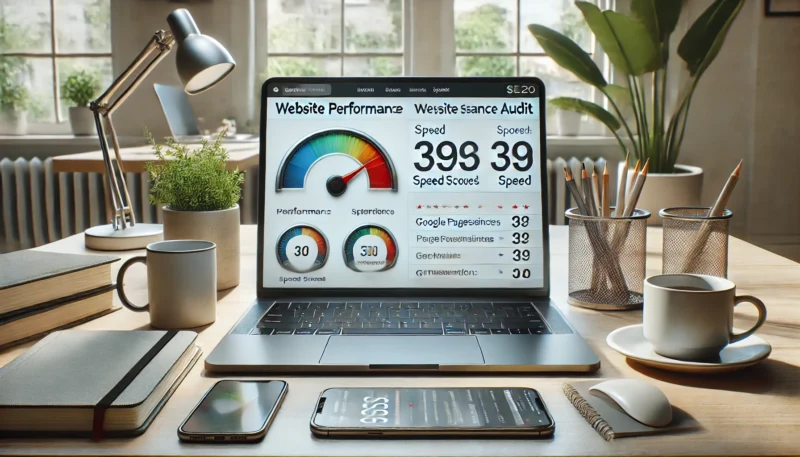In the world of SEO, speed isn’t just a luxury — it’s a ranking factor. A fast-loading website improves user experience, increases engagement, and helps you rank higher in search engines. In 2025, with Google’s continued focus on performance metrics like Core Web Vitals, optimizing your website speed is essential for organic success.
Let’s explore why speed matters and how you can make your site faster — even if you’re not a developer.
Why Website Speed Matters for SEO
1. Google Uses Speed as a Ranking Signal
Since Google’s Page Experience Update, website speed has become a core element in search rankings. Sites that load faster typically have lower bounce rates and better engagement, which signals to Google that the content is valuable.
2. It Improves User Experience
Visitors expect your site to load within 2–3 seconds. If it takes longer, most people will bounce before even seeing your content. Speed keeps people on your site longer — and that’s good for both SEO and conversions.
3. Speed Affects Mobile Ranking
Google’s mobile-first indexing means your site is ranked based on its mobile version. A slow mobile site will drag your entire domain down in the search results, even if your desktop version is fast.
How to Measure Your Website Speed
Before you improve anything, you need to know where you stand. Here are the best tools to analyze your site’s speed:
-
Google PageSpeed Insights: Gives scores for both mobile and desktop along with Core Web Vitals.
-
GTmetrix: Offers a detailed breakdown of what’s slowing your site down.
-
WebPageTest: Allows for testing from different locations and browsers.
-
Lighthouse (Chrome DevTools): Provides performance, accessibility, and SEO audits directly from your browser.
Key Metrics to Track
When checking speed, pay attention to these:
-
Largest Contentful Paint (LCP): Should be under 2.5 seconds
-
First Input Delay (FID): Should be under 100ms
-
Cumulative Layout Shift (CLS): Should be under 0.1
-
Total Blocking Time (TBT): The lower, the better
-
Time to First Byte (TTFB): Should be under 200ms
10 Practical Tips to Improve Website Speed
1. Optimize Your Images
Images are one of the biggest culprits behind slow load times. To fix this:
-
Use modern formats like WebP
-
Compress images with tools like TinyPNG or ShortPixel
-
Set proper image dimensions
-
Use lazy loading for below-the-fold images
2. Use a Lightweight Theme
Bloated themes with unnecessary scripts slow down your site. Choose a fast, minimalist theme optimized for performance. If you use WordPress, options like GeneratePress, Astra, or Neve are excellent.
3. Minify HTML, CSS, and JavaScript
Remove extra spaces, comments, and characters from your code files:
-
Use plugins like Autoptimize or WP Rocket (for WordPress)
-
For non-WordPress sites, use tools like Minify Code or Cloudflare’s Auto Minify
4. Enable Browser Caching
Browser caching stores static files locally, so returning visitors don’t need to re-download everything. This greatly improves repeat visit speed.
WordPress users: Use plugins like W3 Total Cache or WP Fastest Cache.
5. Use a Content Delivery Network (CDN)
A CDN distributes your content across multiple servers globally. This reduces latency and speeds up access for users in different regions.
Popular CDN options:
-
Cloudflare (free and paid plans)
-
StackPath
-
Bunny.net
6. Reduce HTTP Requests
Every file (image, script, font) your site loads is an HTTP request. Combine CSS and JS files when possible, and avoid using too many third-party scripts.
Tip: Only load what you really need — eliminate unused plugins and widgets.
7. Choose a High-Performance Hosting Provider
Cheap shared hosting can ruin your speed, especially during traffic spikes. Invest in reliable, performance-optimized hosting.
Great options include:
-
SiteGround
-
Cloudways
-
Hostinger (business plans)
-
Kinsta or WP Engine (for WordPress)
8. Defer JavaScript Loading
Scripts like ads, analytics, and widgets can block rendering. Use “defer” or “async” attributes on non-critical scripts to load them after the main content.
9. Preload Important Resources
You can speed up rendering by telling the browser to prioritize certain assets (like fonts or above-the-fold images) using rel="preload".
10. Regularly Monitor and Audit Your Site
Optimization isn’t a one-time job. Use Google Search Console and speed tools monthly to track changes and address any new issues.
Final Thoughts: Fast Sites Win in SEO and UX
Speed matters — not just for search engines, but for your visitors too. A slow site creates frustration, damages your reputation, and pushes users away. A fast site boosts engagement, trust, and rankings.
In 2025, as SEO competition grows, site performance could be the edge that sets you apart. Apply these strategies today, and you’ll be building a faster, smarter, and more SEO-friendly web presence.

